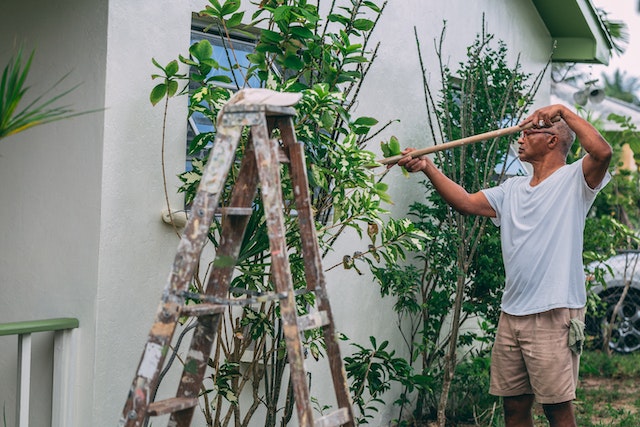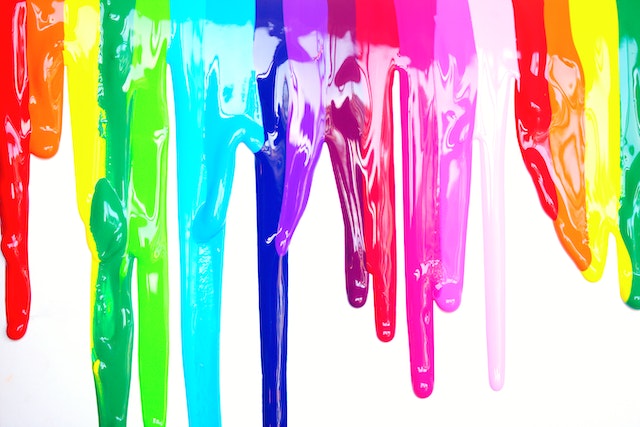Whether you’re painting the inside or outside of a house, the job seems to take care of itself. If you had to wait until the sky was blue and clear to paint, you would never finish the painting. So, it helps to know if you can work on your painting even when the weather isn’t great.
Water and paint don’t go together. Can you even paint when it’s raining or almost raining? If so, will it take so long for the paint to dry that it will change the way it looks or feels?
Table of Contents
Painting a House in Rainy Weather

- Rainy Day Painting
- Never when the surface is wet
- When the surface has just been wet, never.
- Most interior painting is fine.
- Not affected by humidity unless there is condensation on the surface.
- Paint won’t dry as quickly at low temperatures (usually below 34 F).
When It’s Rainy Enough to Paint
You can paint the inside and outside of your house when it rains, but you shouldn’t let the rain touch the paint. This is true for the whole painting process, from the first (dry) surface that isn’t painted to the final, fully cured painted surface.
Even if it’s raining outside, you can paint the inside of your house as long as the rain doesn’t get inside. Since it’s common to leave the windows open while painting, watch out that rain doesn’t get on freshly painted walls or window sills through open windows or screens.
You can expect it to take longer for the paint to dry on both the inside and outside of a building on a humid rainy day than on a dry sunny day. This will make it take longer before you can paint a second coat.
Also, be careful when the air is so humid that condensation forms on the surface.
How to Know When It’s OK to Paint in the Rain
Many experts say that you shouldn’t paint even if it looks like it might rain. But this is usually not possible if you live in a place where it rains a lot. Professional painters especially can’t stop painting outside every time a cloud looks like it might rain.
The time of year to paint depends on things like humidity and temperature, not on words like “fall” or “winter.” As long as the weather stays within these limits, you can call it a painting season.
To figure out if you can paint a surface in the rain, think about:
How things are now
Is it clear that the surface is wet right now? Even a few raindrops are enough to make something wet. A surface that is still wet can’t be painted on until it is completely dry.
Situations in the past
When was the last time it rained? Even if a surface doesn’t look wet, it could have hidden moisture that could affect how your paint sticks to it.
If it rains on an outside wall, it may need four hours of drying time in direct sunlight and temperatures at or above 72 degrees Fahrenheit before it can be painted. If possible, you should let the surface dry for a full day. Even if the flat surfaces are dry, other parts might not be, such as:
- Parts that can’t be seen from the sun
- Molding and trim
- The siding has tiny cracks.
- Screw holes
You touch the wall and it feels dry. This is a common situation. But if you run your brush over a nail hole, it releases water that has been building up. If you don’t notice this right away, the water will drip down the surface you just painted, leaving light streaks. The only way to fix this problem is to paint it again.
Temperature
Is it too hot or too cold? Is the temperature outside below what the paint can say should be the minimum? The temperature and the amount of water in the air work together. The longer it will take for your exterior surface to dry, the cooler it is.
Tip
Some paints can be used even when it’s only 34 degrees Fahrenheit outside. But always plan ahead, check the weather report, and give yourself a buffer zone. For example, if you are painting at 34 degrees in the middle of the morning and you think it will be freezing later that day, you are pushing the limits too far.
Will it get colder than the minimum? If temperatures are expected to drop below the minimum within 10 hours of painting, don’t paint. Check the label on the paint can see what temperature it should be.
How to Fix a Painted Surface That Got Wet
When it rains on a freshly painted surface that hasn’t yet hardened, it’s hard to fix. The water runs in rivulets down the surface of the paint, changing both the color and the feel of the paint.
The best thing to do is wait until the paint is c
ompletely dry. Next, use a straight-edge razor to cut away the raised paint lines. The area might need a little sanding. After you’ve smoothed the surface back out, you’ll need to paint it again.


